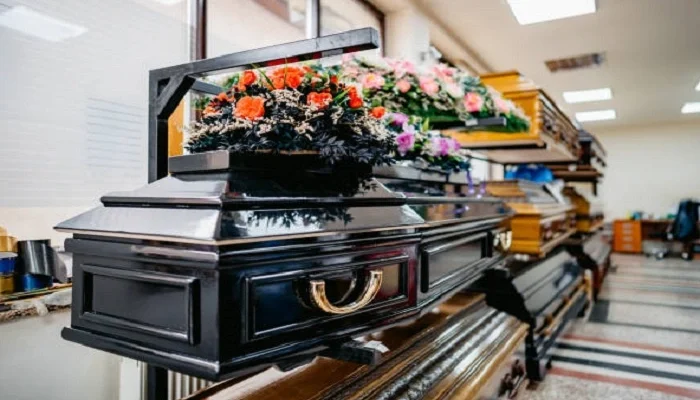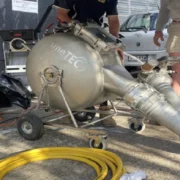Direct cremation is a straightforward, cost-effective option that has become popular. With no embalming, visitation, or formal funeral service beforehand, Direct Cremation Services of Virginia allows families to handle the immediate disposition of a loved one privately and without ceremony. But choosing this option doesn’t mean forgoing the chance to celebrate and honor a life well lived.
In fact, many families find that holding a memorial after a direct cremation allows for more flexibility, personal expression, and intentional reflection. Here’s a closer look at how to thoughtfully plan a meaningful memorial service after a direct cremation.
Understanding Direct Cremation
Direct cremation typically takes place shortly after death, without a viewing or funeral beforehand. Once the cremation is complete, the cremated remains (or ashes) are returned to the family in an urn or other container. Because there’s no rush to coordinate with a funeral home’s schedule or meet tight deadlines, families have the freedom to plan a memorial at a time and place that best suits everyone involved.
This flexibility often brings comfort—especially when loved ones are spread across the country or grieving deeply and not yet ready to host a gathering.
Why Hold a Memorial After Direct Cremation?
A memorial serves many purposes. It offers a moment to celebrate a person’s life, share stories, support one another in grief, and find a sense of closure. While direct cremation skips the traditional ceremony, the value of gathering together remains strong.
Benefits of planning a memorial after direct cremation include:
- More time to plan something meaningful
- Flexibility in location and setting (homes, parks, churches, or event venues)
- More control over the tone and structure—whether formal or casual
- Cost savings that can be directed toward other personalized touches
Deciding When and Where to Hold the Memorial
One of the greatest advantages of post-cremation memorials is the freedom to choose when and where it takes place. There is no right or wrong time. Some families hold a service within a few weeks; others may wait months or tie it to a special occasion like a birthday or anniversary.
Location options include:
- A family home or backyard for a cozy, intimate feel
- A community center or rented venue for larger groups
- A church, temple, or other place of worship
- A local park or natural setting the person loved
- A restaurant or banquet hall for a celebration of life with food and drinks
Think about what the deceased would have wanted and where guests will feel comfortable sharing memories and being together.
Planning the Elements of the Memorial
A memorial doesn’t have to follow any traditional format unless you want it to. It can be spiritual or secular, formal or relaxed. The important thing is that it reflects the life and values of the person being remembered.
Here are some elements to consider including:
1. A Welcome and Opening Remarks
A family member, close friend, or celebrant can begin the event by welcoming everyone and setting the tone.
2. Eulogies or Personal Stories
Encourage attendees to share memories, either in a prepared speech or open format. These moments bring laughter, tears, and healing.
3. Readings, Poems, or Prayers
Select meaningful passages that reflect the individual’s beliefs, personality, or life philosophy.
4. Music and Media
Play favorite songs, show a slideshow of photographs, or display video clips that capture special moments.
5. Display of Ashes or Personal Items
Many families choose to place the urn alongside photos, mementos, or meaningful objects like a favorite hat, book, or piece of art.
6. A Special Ritual
You may include candle lighting, a balloon or dove release, or a group activity like writing memories on note cards. These symbolic acts can help with emotional expression and collective remembrance.
Creating a Lasting Tribute
In addition to the memorial service itself, you may want to create something lasting in your loved one’s honor. This could include:
- Planting a memorial tree or garden
- Donating to a favorite charity or cause
- Starting a scholarship fund
- Creating a scrapbook or memory book for guests to contribute to
- Placing a memorial bench or plaque in a special place
These long-term tributes serve as an ongoing reminder of the person’s impact on your life and the community.
Making It Personal
It’s important that your tribute honors the person who died. Your loved one may have valued family, music, nature, faith, fun, or new experiences. Incorporating these details into the tribute makes the event more significant.
Include their odd hobbies, unique style, or favorite sayings if they have them. Give friends small plants in pots or packets of seeds, for example, if they love gardening. Give them their favorite cookies if you were a baker. These thoughtful additions help the memorial feel like a true mirror of the person who died.
In Closing
If you had a direct cremation, planning a memorial is a way to remember your loved one’s life in a way that is personal and heartfelt. Traditional funerals have time limits that make it hard to focus on what really matters: getting together, remembering, and healing. Whatever kind of memorial you choose—a quiet get-together in your garden or a public party honoring their life—it’s your chance to say goodbye in your own unique way and start the process of keeping their memory alive.
Pedrovazpaulo Executive Coaching: Unlocking Potential with Its Power









Comments